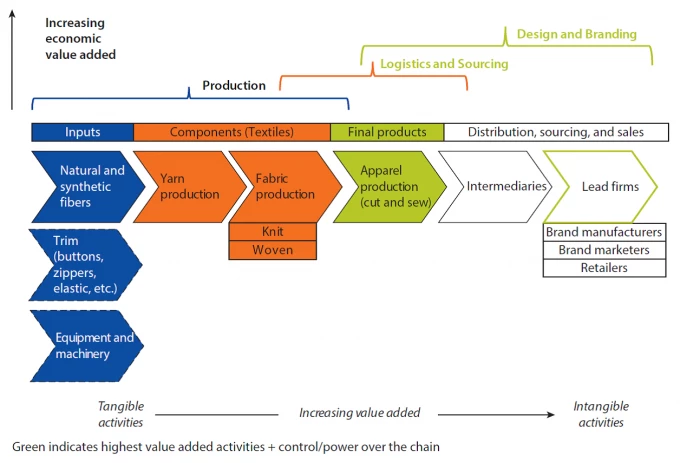 Dans le village de Soavina, à Madagascar, des femmes bénéficient des programmes de développement humain de la Banque mondiale. Photo : Sarah Farhat/Banque mondiale
Dans le village de Soavina, à Madagascar, des femmes bénéficient des programmes de développement humain de la Banque mondiale. Photo : Sarah Farhat/Banque mondiale
Economic inclusion programs help boost the income and assets of the world's poorest individuals and households with a “big push” of coordinated interventions. So far, the policy discussions surrounding these programs have focused on their sticker price, cost-effectiveness, and affordability. While the total cost of these programs is an important data point, a closer examination of program costs through a cost analysis also plays an important role in shaping program design decisions.
By assessing program costs, policy makers and program designers are able to identify any limitations and opportunities that might affect program activities and policies. Furthermore, as economic inclusion programs move to scale, the timely learning from the cost analysis tools can be used to optimize program costs.
The State of Economic Inclusion Report 2021: The Potential to Scale breaks new ground and reframes the discussion on the cost of economic inclusion programs.
The costing analysis included in the report was completed using one of the first tools for standardized multicountry cost disaggregation for government-led and nongovernment-led economic inclusion programs. The PEI Quick Costing Tool 2020 was used to analyze self-reported cost data from 34 economic inclusion programs. This data collection tool represents a new approach to cost analysis—a topic fraught with complications, including challenges in measurement, heterogeneity of program objectives, and complications in comparability.
Cost dominance of financial support components in economic inclusion programs
The cost analysis reveals that multisectoral economic inclusion programs are often dominated by specific program components, such as cash/in-kind transfers or public works (figure 1). Many programs allocate from 50% to 86% of their overall costs to one component. The costs of 13 out of 24 government-led programs are more frequently driven by a single component than those of NGO-led programs (two out of nine).
This dominance of a single component could stem from three reasons. First, programs may build on existing interventions and then introduce smaller-scale add-ons to improve the productive impact of the program as a whole. Second, program designers may view a multiplicity of interventions as potentially increasing complexity, so by prioritizing simpler components they hope to minimize program management complexities and overall costs. Or, third, the relative cost dominance of these components may correspond to the relative weights of the constraints faced by beneficiaries to engaging in economic inclusion in these contexts.
Figure 1. Cost dominance of specific components of economic inclusion programs
Moreover, the programs featuring a dominant single component also have lower delivery and staff costs than those that fiscally prioritize more than one component. On average, in both government-led and nongovernment-led programs, delivery and staff costs account for 13% of the overall cost of programs in which one component dominates in cost share, compared with 26% for programs that fiscally prioritize multiple components (figure 2).
Figure 2. Delivery and staff costs are higher for programs that fiscally prioritize multiple components
“Sticker Price” approach to costing economic inclusion programs can be faulty
This standardized costing exercise also highlights that program sticker prices can be misleading and mask considerable heterogeneity. The unit cost of economic inclusion programs is between $41 and $2,253 (2011 US$, PPP) per beneficiary over the duration of each program (3.6 years on average). This range indicates the huge variation in such programs (however, some of this variation is a factor of the level of maturity of these programs because early stage and experimental programs typically cost less). Therefore, any understanding of sticker prices must be based on their adequacy and impact. This finding also raises the question of whether there should be a minimum threshold below which programs are deemed unable to meet their desired objectives.
Cost analysis is key to cost optimization and scale-up of economic inclusion programs.
The ability to determine program costs is an essential step in further understanding the cost optimization and scale-up of economic inclusion programs. Cost data, particularly disaggregated data, can be very helpful to those designing programs and assessing affordability and potential to scale. The cost analysis will reveal multiple ways to optimize costs, which include variations in the size and cost recovery of cash grants and variations in intensity of modality, frequency, and content of training, mentoring, and coaching. A systematic understanding of costs will enable governments to make sense of program cost-benefit ratios, and it will guide their policy choices.
These findings confirm the value of cost data beyond their use in cost-effectiveness studies. At the same time, this analysis is based on a small subset of the 219 economic inclusion programs being implemented globally and reflected in the report. Increasing the number of programs that are reporting cost information would allow better and more robust analysis, particularly by program type, region, and target group. Therefore, it is critical that policy makers and those implementing economic inclusion programs, both government-led and nongovernment-led, make the cost data available in the public domain.
Call for data
The Partnership for Economic Inclusion (PEI) team hopes that more program implementers and researchers will heed this call to collect and make cost data available widely. Meanwhile, they can increasingly use such data in their program design and policy-making process. To facilitate contributions of data, the PEI developed a data dashboard where cost data can be reported and analyzed.
RELATED
Economic Inclusion Programs Now Benefit 92 Million People Worldwide
The State of Economic Inclusion Report 2021: The Potential to Scale






Join the Conversation